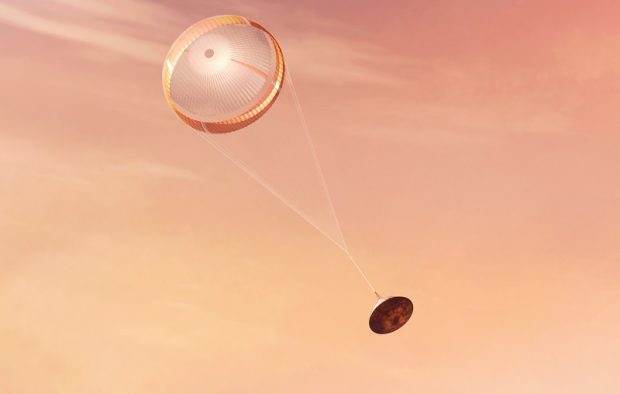Later this year, the American space agency NASA, is set to test the first extra-terrestrial flight of their new drone on Mars.
Called Ingenuity, the lightweight aircraft has been specially built to survive its transport to the red planet as well as the harshness of the environment. If it can hold out for at least 30 sols (about 31 earth days), the helicopter will make a series of short test flights.
Phil Sutton, a lecturer of astrophysics at the University of Lincoln, explained how Ingenuity’s small flight for man, is one giant leap for mankind: “It opens up what you can actually explore. Planets are large, and we’re sending rovers up there with a very limited ability to move about the surface. So you can only really investigate where you land.
“But if you’ve got drones that can really move or fly then you can investigate a lot more. Unseen terrain, atmospherics, weather patterns. It completely opens up other planets.”
Ingenuity landed on Mars earlier this week, alongside a new Mars rover after a 7-month long journey that began at the Cape Canaveral Air Force Station in Florida.
The rover, named Perseverance (or “Percy” for short), is to carry on the job of previous Mars rover Curiosity, by exploring more of the planet, but with the added purpose of investigating whether it supported life in its ancient history.
However, Pavlo Tanasyuk, CEO of UK space robotics company Spacebit, said that ingenuity’s flight will open up opportunities in other fields besides exploration: “It will show that we can run relatively low cost missions, we can run them successfully, and that will trigger an increase in the risk profile of future missions. We used to do missions that were risk-averse and cost billions but now that’s changing thanks to Ingenuity and people like SpaceX.
“NASA used off-the-shelf components and implemented an open -source on a big chunk of its code and I think steps like that will really help these projects to really grow.”
As of February 25, the helicopter has been on Mars for 7 sols, and so far the little machine that could is on course to make its first flight in the coming weeks.
But if you’re itching for more from the Red Planet, then you can tune in here at 9PM tonight to catch a glimpse of the landing site, with a NASA Q&A.
